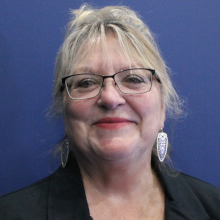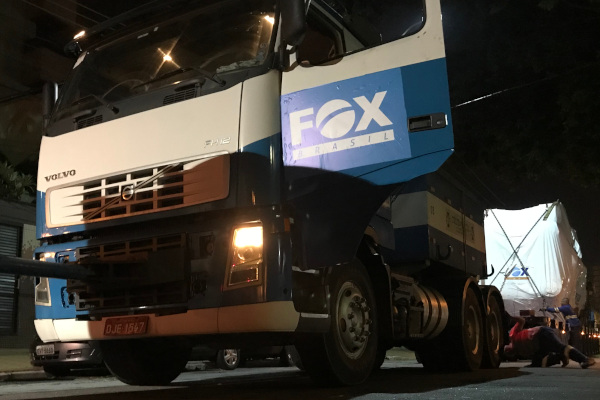Green Sector Growth Sparks Opportunity for Project Cargo
_1.jpg)
By Simon West
The Energy Industries Council (EIC) outlines key trends in the Americas, pointing to significant expansion of oil and gas, wind and hydrogen projects in the region. We then find out from industry leaders in the U.S. and Brazil their perspectives on critical issues expected to shape the project sector in 2025 and beyond.
From Breakbulk Magazine’s Issue 6, 2024 Global Outlook series.
EIC analysis:
The region’s well-established oil and gas sector is undergoing significant growth in the upstream market for floating production storage and offloading (FPSO) units across South America, which offers a more cost-effective, faster, mobile and sustainable solution. This trend is particularly strong in Brazil, Guyana and Suriname, which are projected to lead this market with an accumulated CAPEX of US$143.7 billion by 2030.
In the downstream sector, the U.S. and Brazil are highlights regarding sustainable aviation fuel (SAF) initiatives, supported by favorable regulatory frameworks such as the Inflation Reduction Act (IRA) of 2022, which offers tax incentives for clean energy in the U.S., and the Brazilian National Sustainable Aviation Fuel Program (ProBioQAV), a milestone for the energy transition in the country’s civil aviation sector.
Rising demand for electrification is expected in the region in the coming years, especially in the transport and industry sectors. This increase will be supported by the region’s vast renewables potential, with wind energy playing a key role in markets like the U.S. and Brazil, where 29 wind projects set for start-up by 2030 have already received final investment decision (FID), including four offshore projects. However, in both markets, wind energy faces challenges such as rising costs and supply chain bottlenecks, which could be worsened in the U.S. with the Republican victory likely to shift the focus towards O&G.
Clean hydrogen is also emerging as an important market in the region’s push for net-zero targets, led by the U.S. and Chile, which accumulate an estimated CAPEX of US$145 billion by 2030. Chile stands out with great production potential announced, aiming to produce the world’s cheapest green hydrogen. In the U.S., nine green hydrogen announced projects with start-ups until 2030 have received FID, representing 18% of the global FIDs for similar projects. Nevertheless, these markets are limited by costs, which hinders a scale-up of the supply chain.
Q&A With Local Leaders
1. What is your business outlook for 2025?
Eddie Talbot, managing director USA, Roll Group:
_5.jpg) Roll Group continues to grow and expand its capabilities and geographic areas. We have been successful in growing our market footprint in 2024 across several regions including Africa, the Americas (including Mexico), the Middle East and Asia Pacific. And we see this continuing as we focus on projects and logistics solutions moving into 2025 and 2026. Globally, a new mega-gantry supporting our super-heavy-lift construction activities and, more recently, our new Roll Barge 1 have been engineered and deployed seamlessly to our project sites for execution. As well as our large gantry crane, in 2024 we added 400-plus lines of hydraulic trailers to our global fleet. In 2025, we are adding two more deck carriers to our fleet and a second large gantry crane with lifting capacity of 4,000 tons, and we have further plans to add more ships and barges as well as cranes to cater for the increasing demand from our clients.
Roll Group continues to grow and expand its capabilities and geographic areas. We have been successful in growing our market footprint in 2024 across several regions including Africa, the Americas (including Mexico), the Middle East and Asia Pacific. And we see this continuing as we focus on projects and logistics solutions moving into 2025 and 2026. Globally, a new mega-gantry supporting our super-heavy-lift construction activities and, more recently, our new Roll Barge 1 have been engineered and deployed seamlessly to our project sites for execution. As well as our large gantry crane, in 2024 we added 400-plus lines of hydraulic trailers to our global fleet. In 2025, we are adding two more deck carriers to our fleet and a second large gantry crane with lifting capacity of 4,000 tons, and we have further plans to add more ships and barges as well as cranes to cater for the increasing demand from our clients.
This success provides us with a solid platform heading into 2025. We have several integrated projects to deliver on the U.S. Gulf Coast in 2025 and beyond, and our U.S. business will grow further with the expansion into Mexico and Louisiana, where, for the latter, we are opening a new branch in the St. Gabriel area near Baton Rouge, which will be operational by November 2025.
 Murilo Caldana, project director, FOX Brasil:
Murilo Caldana, project director, FOX Brasil:
For 2025, we anticipate moderate growth driven by infrastructure projects and energy initiatives across the Americas. Globally, shifting trade dynamics may foster more strategic partnerships in key regions, although economic uncertainties could influence project timelines and cargo volumes. In Latin America, the business outlook for 2025 is promising, driven by investment in renewable energy, mining and infrastructure upgrades. Countries such as Brazil, Mexico and Chile are set to lead with significant projects that demand heavy-lift and project cargo capabilities, although economic uncertainties still pose challenges. The outcome of the U.S. election may also impact trade policies, with potential effects on tariffs, investment and cooperation across the Americas.
2. What sectors or specific new projects do you think will be significant for breakbulk and project cargo in the coming year?
Lana Warren, head of Maersk Project Logistics:
Renewable energy including solar and onshore/offshore wind continue to drive strong solution designs for our global teams. The energy sector as a whole is significant, with the largest CAPEX growth coming across in new oil and gas opportunities.
Talbot:
Petrochemical, steel and oil and gas are all major areas for the region. We see more projects coming online and achieving FID including blue and green energy transition projects at various stages of development. Ports and infrastructure are also developing areas, signaling continuous growth and/or improvement of ports across the U.S. that can service the renewables sector. We are already working on several large factory to foundation, land and sea combination projects that we will execute in 2025. These are significant projects that align with our strategy to take on and perform the turnkey land-sea scope of work by providing clients with a single point of contact.
Caldana:
In the Americas, energy – particularly renewables – and infrastructure modernization will be major drivers for project cargo. There is strong potential for growth in offshore wind installations and transport, as well as in large-scale transport requirements for road, rail and port upgrades. In Latin America, offshore wind projects in Brazil, mining expansions in Chile and Peru and transportation upgrades in Argentina and Colombia are set to drive demand for heavy-lift logistics.
3. Do you think the region’s existing infrastructure such as ports, terminals and vessels is prepared to handle the demand for breakbulk and project cargo? What improvements or resources are needed, if any?
 Warren:
Warren:
We can look back at COVID to best understand how eye opening the gaps in our existing infrastructure are. Maersk continues to invest in our APM Terminals to increase our handling capacity to include breakbulk and OOG cargo, as well as extending our footprint to support CFS solutions, warehouse and distribution expansion. This is always with a continued commitment to greener solutions. Ports such as Houston are making the necessary investments to support the growing demand for project cargo capacity; however, some of our smaller private ports lack the same access to funding and depend on vessel commitments to build resource funding. The added demand may help to fund some of that necessary expansion.
Talbot:
There are only a limited number of assets and resources available. It remains important for large capital projects to engineer solutions and select methodologies early to effectively manage project spend and have assurity of supply at time of execution.
Caldana:
While some key ports and terminals are equipped to handle growing demand, capacity and efficiency gaps remain, particularly in accommodating specialized vessels. Upgrades in port equipment, dedicated heavy-lift berths and digital tracking systems could enhance overall readiness. Latin America’s infrastructure faces limitations in handling large-scale project cargo efficiently, particularly at ports and terminals. Currently, we are facing congestion in a few ports in Latin America – Brazil, Mexico and Central America – not to mention the low water issue at the Panama Canal, which is affecting the whole region. Improvements in port handling capacity, specialized equipment and digital tracking are needed to boost efficiency and reduce bottlenecks.
4. What trends are you seeing in freight rates, and do you anticipate these changing?
Warren:
Capacity and world events have the most impact on freight rates. As capacity tightens, owners need to invest in resources to extend capacity outside the operational planned fleet. When rates are increasing it is in direct correlation with market conditions to service and delivery.
Talbot:
Freight rates from certain regions are on the rise. Market volatility driven by events such as the recent drought conditions in the Panama Canal and the geopolitical situation in the Red Sea, which is resulting in longer journey times and back-up of vessels, are all contributing factors to vessel shortages and increased rates. Our fleet continues to see a very high occupation, and we see a real demand to increase our capacity to meet project needs in the coming years.
On a modular and wide-deck capacity front, there is for a variety of reasons still a lack of newbuilds coming into the market, and this is leading to assets being in demand globally. The barge market in the U.S. and on the Gulf Coast continues to be tight due to the demands of various megaprojects. Barges are being booked onto projects for the long term, therefore it remains important to select logistics providers early and engineer the cargo transport method with a clear definition of the mode of transport. As demand increases in both oil and gas and renewables, specifically offshore wind, we see the current volatility and high demand for international vessels continuing through 2025.
5. What are the biggest challenges for your sector in the year ahead, and how is your company preparing to navigate them?
 Warren:
Warren:
Disruption and volatility are the new normal in our industry, which emphasizes the need for supply chain resilience. We’re going all the way to help our customers navigate that volatility by offering them truly integrated logistics across the entire supply chain.
To expand on our already-strong ocean shipping capabilities, we’ve built up a fellowship of trucks, planes, ships, trains, warehouses and logistics strategists so we can help our customers grow, mitigate risk and reduce their costs. We will also commence our new operational cooperation with Hapag-Lloyd in February 2025 with an ambition to deliver industry-leading schedule reliability above 90%.
Talbot:
Vessel and barge availability is a challenge – customers and projects to plan and book early where possible. It is important for projects to seek and understand early visibility on the transportation strategy to enable engineering to progress and early planning to take place. In many places, permitting, securing fixed funding and providing assurance of costs and methodology is critical for a successful project; by engineering the logistics strategy early we can select routes, methods and assets where required to mitigate against any external factors and therefore reduce project risks.
Caldana:
In 2025, Latin America’s breakbulk sector will face several challenges including regulatory hurdles, infrastructure limitations and fluctuating project timelines. We are preparing by strengthening local partnerships, investing in adaptive logistics solutions and streamlining operations to handle varying demands effectively. Economic fluctuations, infrastructure limitations and regulatory hurdles will challenge Latin American project logistics, so we’re enhancing partnerships, leveraging flexible logistics solutions and investing in operational resilience to stay agile. While investment in infrastructure is generally strong, political transitions – especially in Argentina and Peru – could impact project timelines or funding. Companies operating in Latin America are wise to monitor these shifts closely, as government stability and economic policies – such as inflation control and currency stability – play a major role in project continuity.
6. Is the balance between global and regional supply chains changing, and if so, in what ways?
Warren:
The global supply chain we know today has been built over multiple decades. We don’t believe we’re seeing a revolution of how it works, but we are seeing adjustments in sourcing behavior from some customers, such as sourcing out of different parts of Southeast Asia rather than China or investing in cross-border options out of Mexico.
Talbot:
We see several supply chain trends coming through, but at varying speeds. For example, European Union regulations such as carbon border adjustment mechanisms on imports could have an impact on global supply and how projects are built to meet emissions guidelines. The need for carbon-reducing technology and carbon reporting will affect how supply chains are managed, but again, at different speeds. The criteria and balance between quality, schedule and price is still largely the driving factor when it comes to selection but gradually emissions will play more of a part in this as guidelines become available. Other factors such as cyber security and talent gaps are present and need to be addressed. As a Tier 1 company, we are readying ourselves for these developments and actively working to bridge any gaps to meet the needs of our customers and the sectors we serve.
Caldana:
Yes, the balance is shifting toward more regionalized supply chains to mitigate global disruptions. This trend is likely to increase demand for reliable, regionally based project logistics, especially as more companies focus on securing supplies closer to end markets. Supply chains in Latin America are becoming more regionally focused, partly to reduce reliance on distant suppliers and ensure more resilient operations. This trend benefits breakbulk and project cargo, as companies increasingly prioritize local sourcing for their projects across the region. There shift aligns with nearshoring efforts in Mexico and increased local sourcing across the region, boosting demand for reliable project logistics. Policies supporting renewable energy, infrastructure investment and regional trade integration will likely drive project growth. U.S.-Latin American relations – shaped by trade agreements and economic stability – will continue to impact sectors like energy, mining and transportation across the region.
Read more in the series:
Outlook Middle East & Africa
Outlook Asia
Outlook Europe
TOP PHOTO: Maersk prepares to transport a wind blade from the Port of Pecem in Brazil. Credit: Maersk
SECOND: FOX Brasil transports a heavy industrial components for an automotive project in Brazil. Credit: FOX Brasil
